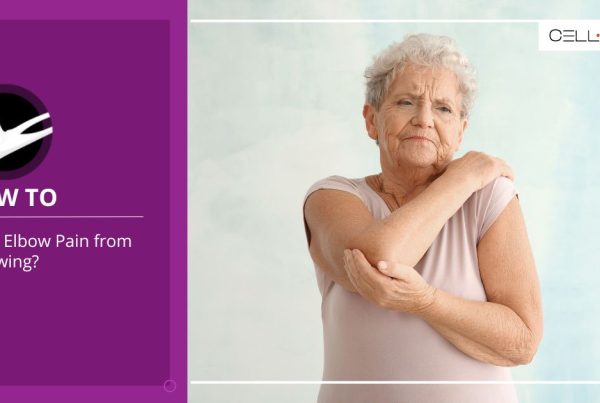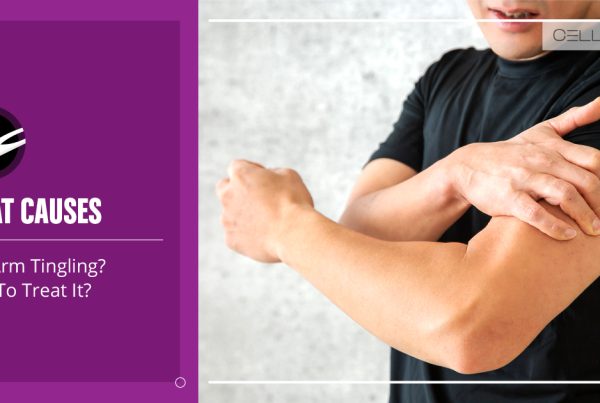Published on: November 21, 2024 | Updated on: January 18, 2025
Elbow pain when lifting weights or moving your arm is a common issue many people experience at some point in their lives. Whether you’re a workout enthusiast, an athlete, or have a job that requires repetitive arm movement, you must have experienced elbow pain.
One of the prevalent reasons for elbow pain is arthritis. However, the elbow pain is more likely a result of repetitive strain injury, which is a type of wear and tear damage.
Elbow pain can vary, ranging from minor inconvenience to quickly restricting movement, limiting your daily activities. Understanding the underlying causes, the available treatment, and prevention is crucial to managing elbow pain.
Addressing this problem on time saves you from complications such as limited mobility. Therefore, it is crucial to understand the anatomy of the elbow first, as it is the primary step in intercepting elbow pain.
Understanding the Anatomy of the Elbow
The elbow is one the most complex joints in the body, comprising a total of three bones: the humerus, radius, and ulna. These are the upper arm bone and forearm bones that meet at the elbow to form a joint.
Designed to facilitate movement, the elbow joint allows four primary functions: flexion, extension, pronation, and supination.
Any injury or trauma to the joint limits movement. Repetitive strain injury or stress during any of the functions causes conditions such as Tennis Elbow or Golfer’s Elbow. These conditions lead to elbow pain when lifting your arm.
Common Causes of Elbow Pain When Lifting
Overusing the elbow joint, poor form, muscle strain, or ligament injuries cause elbow pain. Here are the most common causes of elbow pain.
Tennis Elbow (Lateral Epicondylitis)
Among the most common causes of elbow pain is lateral epicondylitis, also called tennis elbow. Epicondylitis results from the inflammation of tendons on the outer part of the elbow.
Inflammation from an injury or repetitive arm movements can also cause tennis elbow. The pain radiates to the forearm.
Tennis elbow is common among people who frequently lift heavy weights. For example, people who work at the gym are at a higher risk of developing lateral epicondylitis.
Golfer’s Elbow (Medial Epicondylitis)
The golfer’s elbow is an overuse injury. It is the result of repetitive arm movement that causes wear and tear of the joint. This affects the inner side tendons in the elbow. You may experience elbow pain when lifting your arm.
Activities such as lifting heavy weights, improper wrist flexion, and movements like curls, presses, or gripping weights too tightly make this condition worse. Usual symptoms include radiating pain from the elbow to the forearm, inflammation, heated sensation, and redness.
Olecranon Bursitis
The bursa, a fluid-filled sac that cushions the elbow joint, often causes increased pressure and, hence, pain in the joint.
Olecranon bursitis occurs from repetitive elbow movements or prolonged pressure in the elbow joint from overusing the elbow. A lesser-known cause may be gout.
Usual symptoms include swelling, inflammation, redness, and pain around the elbow area. It often causes intense elbow pain when lifting heavy objects. This condition is also called the student’s elbow.
Elbow Tendonitis
Elbow tendonitis means that the tendons in the elbow are inflamed. This happens from repetitive strain injury.
Poor form during weightlifting, sudden increase in weight load, and improper body mechanics can cause elbow tendonitis.
Symptoms include muscle fatigue, forearm pain, restricted wrist and finger movement, and weakness in the arm.
Symptoms and Diagnosis of Elbow Pain
Various symptoms associated with elbow pain when lifting the arm include sharp or dull persistent aches implicating underlying causes such as those stated above.
The pain may also inhibit the motion and range of the arm itself, as the pain sometimes radiates down the forearm, wrist, and hands. It may also affect your upper arm.
If persistent, the pain can feel like a constant stinging sensation, which may worsen when you lift your arm above your head. Extension and flexion worsen the pain.
Diagnosis of elbow pain typically involves physical examination. The doctor takes the history to factor out the causes of elbow pain when lifting weights. You have to account for a recent fall, accident, injury, or any underlying conditions such as arthritis.
Upon examination, the doctor may ask you to perform specific actions to assess the range of motion. This may include elbow extension, flexion, and straightening your arm out to diagnose the cause of pain.
Treatment Options for Elbow Pain
The treatment for elbow pain should always be done under the supervision of a trained professional who can correctly guide you toward the path to recovery.
Rest and Activity Modifications
One of the best ways to relieve elbow pain is to rest and avoid strenuous activities that may aggravate the pain, such as weightlifting, bench presses, and push-ups.
If you work a job requiring weightlifting, you should request time off or a change of responsibilities. For better recovery, your doctor might suggest wearing an elbow brace.
Physical Therapy
Physical therapy is a cornerstone in quick recovery to strengthen the muscles and tendons around the elbow and increase flexibility.
For this purpose, seeking a trained physical therapist who can guide you toward best practices is recommended. Physiotherapy also improves joint stability, which reduces the risk of further injury and elbow pain when lifting your arm.
Ice and Heat
If you have had a recent injury or accident and are recovering immediately afterward, it is recommended that you ice the area to numb the pain. Immediately after an injury, ice the affected area for 15-20 minutes every three to four hours.
Avoid placing the ice pack directly onto the skin; instead, wrap it in a cloth or a towel that provides constant cooling without the risk of frostbite.
Once the inflammation subsides, use warm compresses to increase the blood flow to the muscles around the elbow to release muscle tension.
Preventing Elbow Pain
To prevent elbow injury or pain when lifting the arm, it is essential to take proactive steps to protect the joint from further complications.
- Proper lifting techniques: Use proper techniques when lifting weights or exercising to prevent joint injury. Do not continue with exercises such as bicep curls if they cause elbow pain. Change your workout angles to reduce repetitive strain injuries to the elbow joint.
- Ergonomics: Make ergonomics adjustments at work, such as maintaining a proper posture and keeping your wrists and elbows in a neutral position. If your job consists of heavy lifting activities, make sure to practice safety. If your work consists of a workstation, it is advised to take regular breaks and stretch your arms and wrists.
Wrap Up
It is essential to seek medical attention if you experience severe elbow pain when lifting weights, especially if it comes with swelling, redness, or sudden loss of motion.
Constant elbow pain that does not wither away with home remedies and self-care measurements is a sign to visit the healthcare provider. Early intervention can prevent long-term complications, ensuring complete recovery.
Sources
Footnotes
- Javed M, Mustafa S, Boyle S, Scott F. Elbow pain: a guide to assessment and management in primary care. Br J Gen Pract. 2015 Nov;65(640):610-612.
- Patiño JM, Corna AR, Michelini A, Abdon I, Ramos Vertiz AJ. Elbow Posterolateral Rotatory Instability due to Cubitus Varus and Overuse. Case Rep Orthop. 2018 Aug 5;2018:1491540.
- Blackwell JR, Hay BA, Bolt AM, Hay SM. Olecranon bursitis: a systematic overview. 2014 Jul;6(3):182-190.
References
- Elbow Arthritis. Penn Medicine. Accessed 09/12/2024.
- The Anatomy of the Elbow. Washington University Orthopedics. Accessed 09/12/2024.
- Elbow Joint. Cleveland Clinic. Accessed 09/12/2024.
- Lateral Epicondylitis (Tennis Elbow). Johns Hopkins Medicine. Accessed 09/12/2024.
- Medial Epicondylitis. StatPearls. Accessed 09/12/2024.
- Elbow Olecranon Bursitis. Cleveland Clinic. Accessed 09/12/2024.
- Elbow Tendinitis. Yale Medicine. Accessed 09/12/2024.
- Elbow Flexion. Healthline. Accessed 09/12/2024.
- Elbow Pain. Healthline. Accessed 09/12/2024.
- When to Use Ice or Heat. UnityPoint Health. Accessed 09/12/2024.
CELLAXYS does not offer Stem Cell Therapy as a cure for any medical condition. No statements or treatments presented by Cellaxys have been evaluated or approved by the Food and Drug Administration (FDA). This site contains no medical advice. All statements and opinions are provided for educational and informational purposes only.
Dr Pejman Bady
Author
Dr. Pejman Bady began his career over 20 years ago in Family/Emergency Medicine, working in fast-paced emergency departments in Nevada and Kansas. He has served the people of Las Vegas as a physician for over two decades. Throughout this time, he has been met with much acclaim and is now the head of Emergency Medical Services in Nye County, Nevada. More about the doctor on this page.
Dr Pouya Mohajer
Contributor
Pouya Mohajer, M.D. is the Director of Spine and Interventional Medicine for CELLAXYS: Age, Regenerative, and Interventional Medicine Centers. He has over 20 years of experience in pain management, perioperative medicine, and anesthesiology. Dr. Mohajer founded and is the Medical Director of Southern Nevada Pain Specialists and PRIMMED Clinics. He has dedicated his career to surgical innovation and scientific advancement. More about the doctor on this page.









